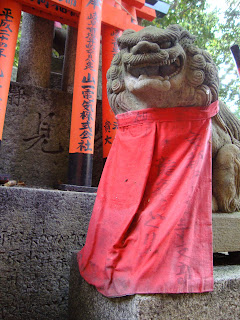Day 13 Photographs
 |
| Wieden + Kennedy |
On Monday, the group had another treat in store for us at
Wieden + Kennedy. We met with Blake Harrop and Caleb Jensen at the recently relocated
Wieden + Kennedy Tokyo office. Blake compared the previous office location as
that of Times Square and new office as more of a Brooklyn vibe.
After introductions, the group settled in to watch and
discuss case studies on the Nike "Tokyo. Just Do It" campaign and
UniQlo.
For the Nike campaign, W + K took to the street interviewing
members of the skateboarding and extreme biking community. They used the
group's own words and images on billboards in spaces where this community hangs
out to communicate the brand.
Billboard for Wieden + Kennedy's "Just Do It. Tokyo" campaign.
|
Blake and Caleb explained how they aimed to create an
office that was not just an extension of the larger Wieden + Kennedy but that
was truly part of Japan and Japan's culture. In order to accomplish the firm
needed to acquire Japanese clients.
One of the firm's first Japanese clients was UniQlo. This
brand creates decent quality, stylish, affordable clothes. The brands original
ads were typically Japanese, loud, aggressive and noisy in order to command
attention. The problem, however, was that these commercials and ads did not present
a flattering image of the customer.
W+K changed the ads to be quiet, almost silent--artful and
elegant. The firm used the Japanese principals of art to create a Japanese
advertisement by incorporating emptiness, space and by leaving the message
slightly vague and open for interpretation.
The creatives at W + K also gave the group some ADVICE:
- Keep trying new things
- Keep on keeping on - as Bob Dylan would say.
- Be a sponge
- Put yourself in uncomfortable situations
They also mentioned the most interesting people are people
who continue to make things, work on projects and create for the sake of
creating.













































